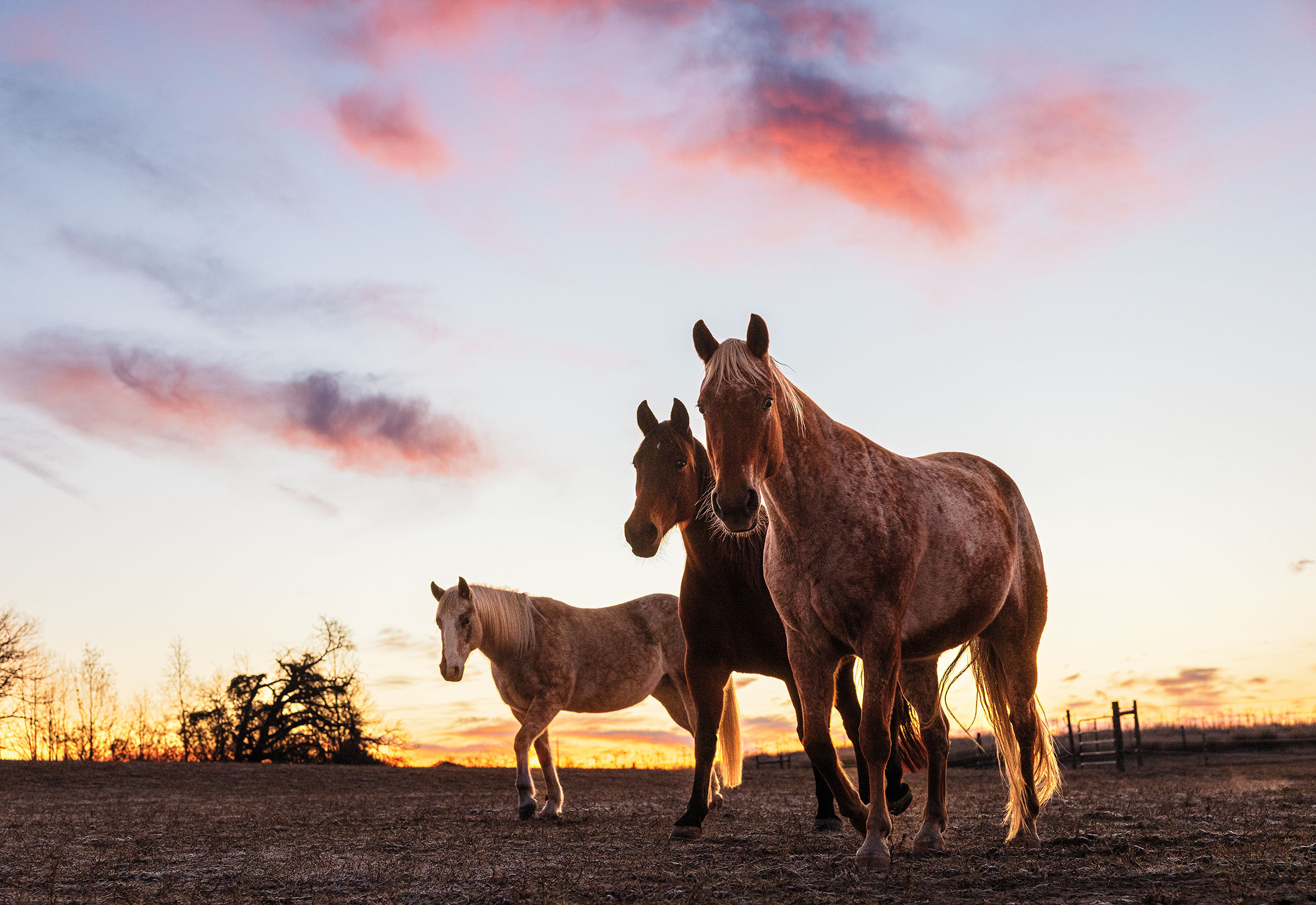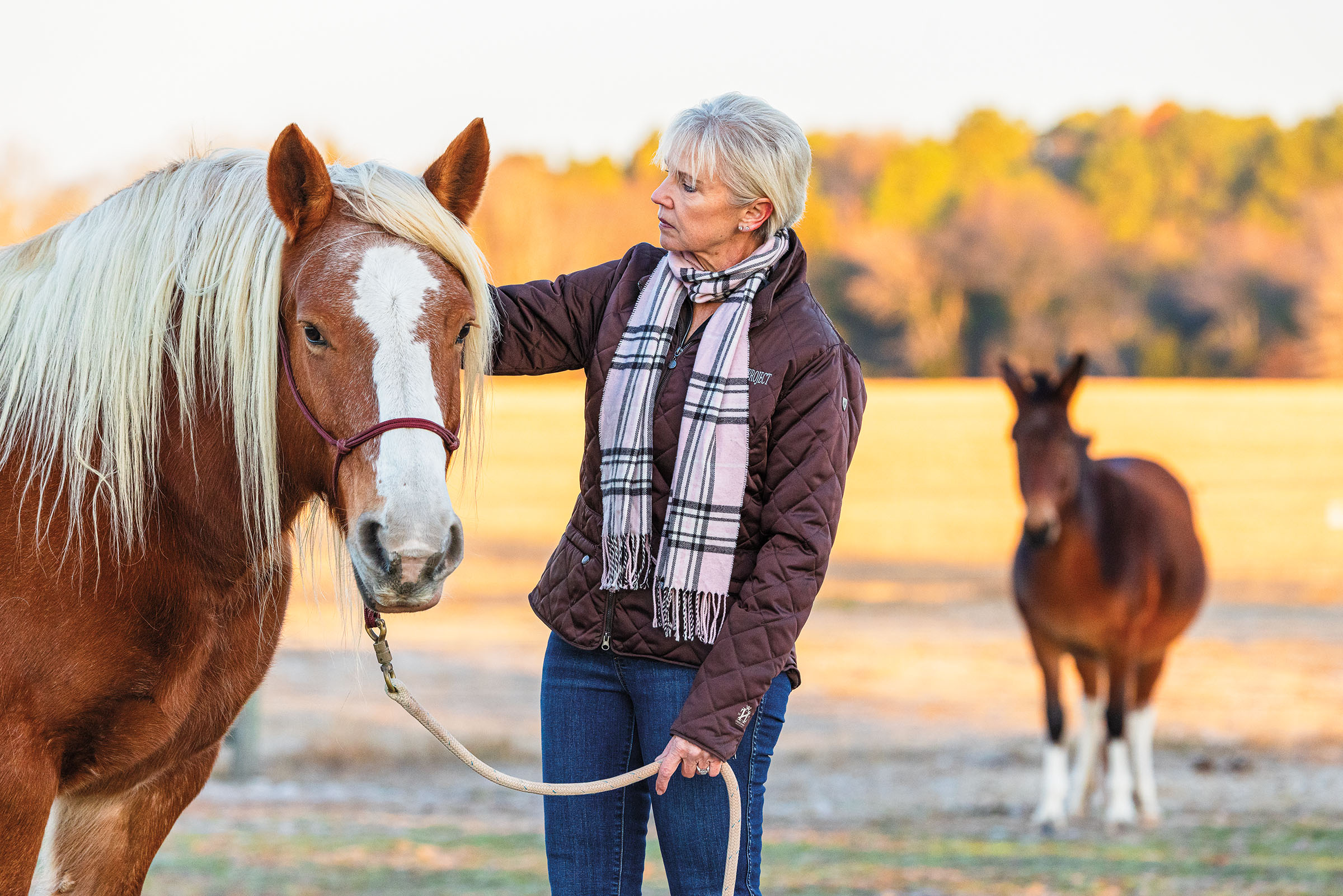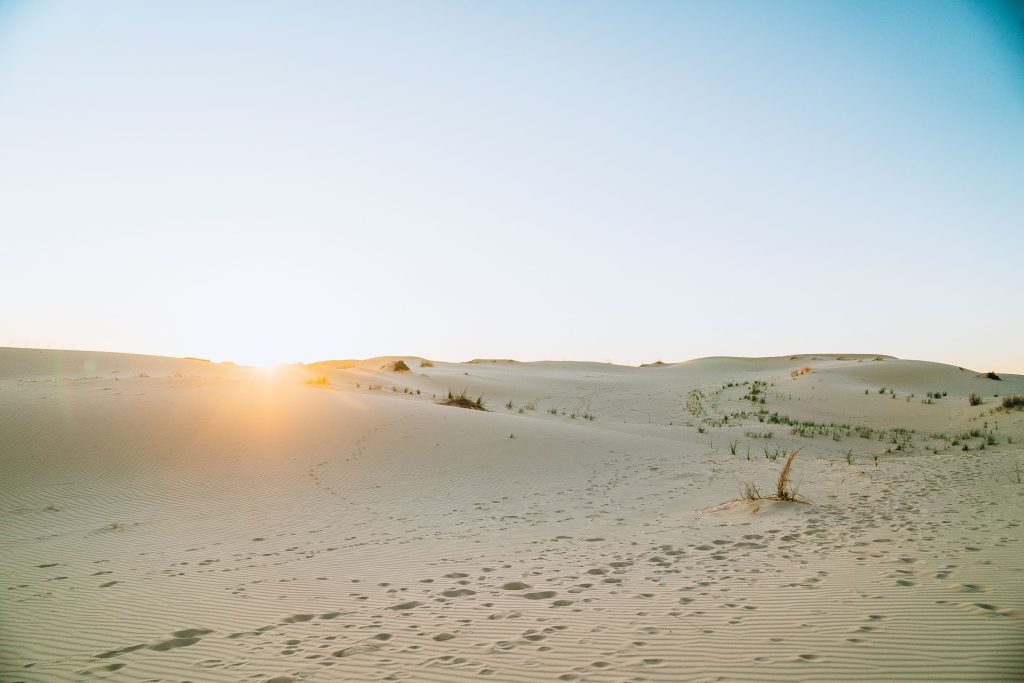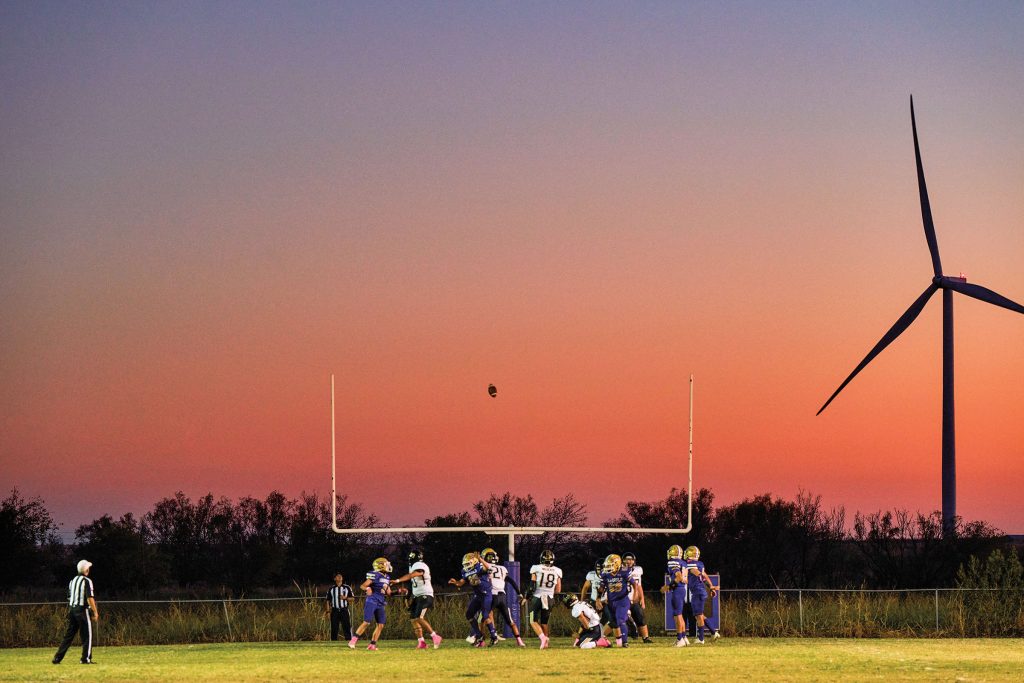
The Pegasus Project rehabilitates, trains, and adopts out formerly abandoned horses.
Like all the horses and donkeys on the property, Cassidy the quarter horse and an American paint horse named Delight get regular cranial massages to soothe their muscles and their minds. On sunny days, their pink noses are spread with sunscreen. Instead of being confined to stalls, these rescued animals roam sprawling fenced spaces at Allyson and Mike DeCanio’s ranch near Ben Wheeler, about 25 miles west of Tyler. Life wasn’t always so idyllic for these horses, though. Some, like Sky, Jax, and Shelby, were malnourished and left for dead on the land of a neglectful owner in Wood County.
“It was a horrible place of suffering,” Allyson says.
In 2016, she got a call from the sheriff’s department about the neglected herd, named the Phoenix Herd after an Appaloosa yearling foal who was dying from untreated wounds and malnourishment. The county had no resources for a herd that size, so they awarded the 14 surviving animals to The Pegasus Project, the organization the DeCanios started in 2009. DeCanio started the nonprofit after she got a call from the Humane Society of East Texas about a herd of 12 neglected horses in Smith County. The mares and geldings went to a children’s camp, and she took in two stallions who needed care, food, and medical attention. Eventually, she left her law career completely so she could focus on her passion–saving and rehabilitating the state’s neglected equines, once a symbol of our tough outlaw spirit.
It’s believed that Texas used to be home to over 1 million wild horses. Horse-like animals evolved into existence in North America around 55 million years ago and went extinct on the continent during the last Ice Age, according to Veronica Arias, a curator at the Panhandle-Plains Historical Museum. “Fast forward to the 16th century, and the Spanish reintroduced horses back onto the continent,” she says. These Spanish Colonial horses, from which nearly all Western horses are descended, ran free in herds throughout South Texas. Their range included the Wild Horse Desert and Mustang Island, both named for the mustangs that roamed freely. They also revolutionized the hunting and warfare capabilities of Indigenous peoples like the Comanche and Apache in Texas, according to Chelsie Huseman, a horse specialist at Texas A&M AgriLife Extension Service. Indigenous horseback riders became the first vaqueros—the original cowboys—as they drove cattle and herded wild horses throughout Mexico and Texas. Vaqueros were “instrumental in demonstrating cowboy skills and introducing rodeo,” utilizing domesticated horses to wrangle cattle and work land, Huseman says. This led to the modern image of the Western cowboy.
In the late 19th century, horses went from being a vital part of the economy, allowing ranchers to move cattle and transporting people, to more of a luxury item. Once agriculture and the economy started to rely less on horses, the purposes of horses changed drastically. “If your horse was lame and you needed that horse to plow your field, you would do everything in your power to get your animal back to health,” Huseman says. “Now medical expenses lead to abandonment or neglect.” As cities encroached and developers moved in on farmland and ranchland, open spaces became scarcer. Drought also drove hay prices up, and horses and donkeys became too expensive for many.

Pegasus Project founder Allyson DeCanio looks after her rescue horses in Ben Wheeler.
The Pegasus Project is one of several equine adoption facilities around the state. Others include the Bluebonnet Equine Humane Society, Wild Horse Foundation, and Blue Moon Sanctuary. Owners like the DeCanios and Anna Eby of Blue Moon in Georgetown say that animals are abandoned because owners can’t afford to feed or care for them, or ranchers sell their land to developers and leave behind whole herds. Many are then kept in cramped, inhumane conditions until they can be auctioned off for, in most cases, slaughter.
In 2009, the DeCanios bought their 95-acre property and started off with a dozen horses. They try not to have more than 50 horses and donkeys at one time, so they can give each animal the attention it deserves. But in 2018, they got a call from a former American paint horse breeder in Winona with more than 60 animals she couldn’t care for. With no one else stepping in to help, they decided to take in 42 horses at the same time.
DeCanio introduces me to a donkey named Jim and Sioux the mule, who is apparently “a busybody.” A paint horse named Delight “has a permanent ‘I’m crazy’ look on her face,” DeCanio says, noting her crystal blue eyes.
She points to a Tennessee Walker gelding nearby. “The sheriff who seized the horse told me that horse’s name, and I thought, that is the silliest name, I am not calling that poor horse that name,” she says. “I didn’t tell the sheriff that, but I swear when I looked at that horse, he told me his name was Chip.”
A few hours south at Blue Moon Sanctuary in Georgetown, Eby shows me around her 30-acre property, which is home to 130 rescued donkeys, 20 horses and mini horses, eight pigs, six cats, and four dogs.
Farmhands
The Pegasus Project in Ben Wheeler is looking for volunteers to help with the Wings Over Pegasus festival every spring and assist with feeding, grooming, and ranch cleanup.
mypegasusproject.org
Blue Moon in Georgetown is creating more opportunities to assist with donkey and horse care and land upkeep. Interested volunteers can email
[email protected].
facebook.com
The statewide Texas 4-H Homes For Horses program gives 4-H youth the chance to help neglected horses through hands-on experience.
tx4-hhomesforhorses.com
May is ASPCA’s Adopt a Horse Month. If adopting isn’t possible, volunteer at the national Right Horse Initiative to help with barn upkeep, administrative tasks, grooming, and feeding.
aspcarighthorse.org
Like DeCanio, she’s a lawyer, but she still runs her own practice from Blue Moon and takes care of the animals as well. I meet Tink, Zelda, and a baby donkey named Briar who zooms around the land to get his energy out. Eby says she was living a “normal life” as a lawyer until 2016, when her dog died, leaving her “very emotionally vulnerable.” A friend had adopted two donkeys, and Eby was smitten.
Blue Moon and Pegasus both rely on fundraising and donations to operate. The latter hosts events throughout the year like hayrides and their Wings Over Pegasus event every spring, which includes an air show. Even with a staff of seven ranch hands, there’s always work to do, horses to brush, and adoptive homes to find for the animals. On the day I visit Pegasus, Jax is about to go live with his adopter in Arkansas.
Though the horses at these sanctuaries don’t run as free as their ancestors, they embody the resilience and work ethic pivotal to Texas’ cowboy ethos. And their preservation ensures a piece of the state’s identity lives on for centuries to come.






